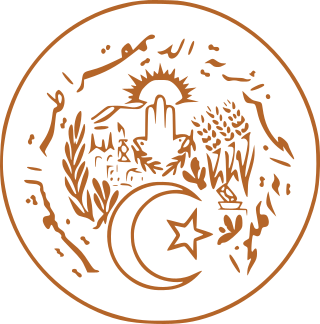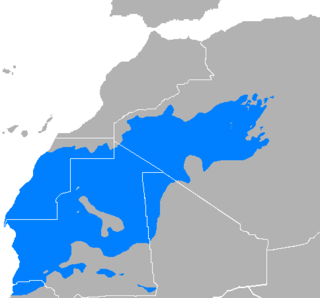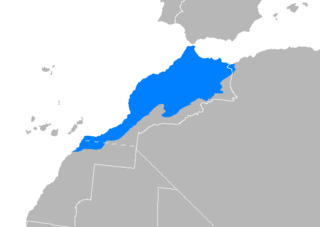See also
Arabic language | |||||||||||||||||||||||||||||||||||||||||||||||||
|---|---|---|---|---|---|---|---|---|---|---|---|---|---|---|---|---|---|---|---|---|---|---|---|---|---|---|---|---|---|---|---|---|---|---|---|---|---|---|---|---|---|---|---|---|---|---|---|---|---|
| Overviews | |||||||||||||||||||||||||||||||||||||||||||||||||
| Alphabet | |||||||||||||||||||||||||||||||||||||||||||||||||
| Letters | |||||||||||||||||||||||||||||||||||||||||||||||||
| Varieties |
| ||||||||||||||||||||||||||||||||||||||||||||||||
| Academic | |||||||||||||||||||||||||||||||||||||||||||||||||
| Linguistics | |||||||||||||||||||||||||||||||||||||||||||||||||
| Technical |
| ||||||||||||||||||||||||||||||||||||||||||||||||
| |||||||||||||||||||||||||||||||||||||||||||||||||
| Jijeli | |
|---|---|
| Native to | Algeria |
| Region | Jijel Province |
| Language codes | |
| ISO 639-3 | None (mis) |
arq-jij | |
| Glottolog | None |
| IETF | ar-u-sd-dz18 |
Jijeli, or Jijel Arabic, is a variety of Arabic spoken specifically in the Jijel Province in northeastern Algeria, but traces of it reach parts of the neighboring Skikda and Mila Provinces. It is quite different from all the other Arabic dialects spoken in eastern Algeria and has probably survived into present times because of the geographic enclavement of that mountainous area and the difficulty of terrestrial connections with the rest of the country for centuries.
Jijel is a relic of the Pre-Hilalian Arabic dialects (resulting from the Muslim conquest of the Maghreb in the 7th and 8th centuries) once spoken over all of Constantine, Algeria but later mixed with Bedouin Hilalian dialects brought by the invasion of the Banu Hilal in the 11th century.
Pre-Hilalian Arabic dialects remained intact only in a small area around Jijel while they were heavily mixed with bedouin dialects in the areas of Constantine, Mila, Collo and El Milia. Pre-Hilalian dialects also remain in the urban areas of Fez, Rabat, Tlemcen, Constantine and Tunis. Tlemcen Arabic and Jijel Arabic remain very close. [1] Jijel Arabic is also amongst the most Berber-influenced Arabic dialects of Algeria.

Algeria, officially the People's Democratic Republic of Algeria, is a country in the Maghreb region of North Africa. The country is the largest country by total area in Africa and in the Arab world, and is bordered to the northeast by Tunisia; to the east by Libya; to the southeast by Niger; to the southwest by Mali, Mauritania, and Western Sahara; to the west by Morocco; and to the north by the Mediterranean Sea. It has a semi-arid geography, with most of the population living in the fertile north and the Sahara dominating the geography of the south. Algeria covers an area of 2,381,741 square kilometres (919,595 sq mi), making it the world's tenth largest nation by area, and the largest nation in Africa. With a population of 44 million, Algeria is the ninth-most populous country in Africa, and the 32nd-most populous country in the world. The capital and largest city is Algiers, located in the far north on the Mediterranean coast.

Algeria, since December 18, 2019, is divided into 58 wilayas (provinces). The 58 provinces are divided into 1541 baladiyahs (municipalities). The name of a province is always that of its capital city.

Hassānīya is a variety of Maghrebi Arabic spoken by Mauritanian Arabs and the Sahrawi. It was spoken by the Beni Ḥassān Bedouin tribes, who extended their authority over most of Mauritania and Morocco's southeastern and Western Sahara between the 15th and 17th centuries. Hassaniya Arabic was the language spoken in the pre-modern region around Chinguetti.

The Hammadid dynasty or Kingdom of Hammadid was a branch of the Sanhaja Berber dynasty that ruled an area roughly corresponding to north-eastern modern Algeria between 1008 and 1152. Its realm was conquered by the Almohad Empire.

Maghrebi Arabic is a vernacular Arabic dialect continuum spoken in the Maghreb region, in Morocco, Algeria, Tunisia, Libya, Western Sahara, and Mauritania. It includes Moroccan, Algerian, Tunisian, Libyan, and Hassaniya Arabic. It is known locally as Darja, Derdja, Derja, Derija or Darija, depending on the region's dialect.. This serves to differentiate the spoken vernacular from Standard Arabic. The Maltese language is believed to be derived from Siculo-Arabic and ultimately from Tunisian Arabic, as it contains some typical Maghrebi Arabic areal characteristics.

Andalusi Arabic, also known as Andalusian Arabic, was a variety or varieties of Arabic spoken mainly from the 9th to the 17th century in Al-Andalus, the regions of the Iberian Peninsula once under Muslim rule. It became an extinct language in Iberia after the expulsion of the former Hispanic Muslims, which took place over a century after the Granada War by the Catholic Monarchs of Spain. Once widely spoken in Iberia, the expulsions and persecutions of Arabic speakers caused an abrupt end to the language's use on the peninsula. Its use continued to some degree in North Africa after the expulsion, although Andalusi speakers were rapidly assimilated by the Maghrebi communities to which they fled.

The official languages of Algeria are Arabic and Tamazight (Berber), as specified in its constitution since 1963 for the former and since 2016 for the latter. Berber has been recognized as a "national language" by constitutional amendment since 8 May 2002. In February, 2016, a constitutional resolution was passed making Berber an official language alongside Arabic. Algerian Arabic and Berber are the native languages of over 99% of Algerians, with Algerian Arabic spoken by about 90% and Berber by 10%. French, though it has no official status, is still used in media and education, due to Algeria's colonial history. Kabyle, the most spoken Berber language in the country, is taught and partially co-official in parts of Kabylie.

Tunisian Arabic, or simply Tunisian, is a set of dialects of Maghrebi Arabic spoken in Tunisia. It is known among its over 11 million speakers as: تونسي, romanized: Tounsi[ˈtuːnsi](listen), "Tunisian" or Derja "everyday language" to distinguish it from Modern Standard Arabic, the official language of Tunisia. Tunisian Arabic is mostly similar to eastern Algerian Arabic and western Libyan Arabic.

Jijel is a province (wilaya) in Algeria, on the eastern Mediterranean coast. The capital is Jijel. Taza National Park is located in this province.

The Sanhaja were once one of the largest Berber tribal confederations, along with the Zanata and Masmuda confederations. Many tribes in Algeria, Burkina Faso, Libya, Mali, Mauritania, Morocco, Niger, Senegal, Tunisia and Western Sahara bore and still carry this ethnonym, especially in its Berber form. Other names for the population include Zenaga, Znaga, Sanhája, Sanhâdja and Senhaja.

Algerian Arabic is a dialect derived from the form of Arabic spoken in northern Algeria. It belongs to the Maghrebi Arabic language continuum and is partially mutually intelligible with Tunisian and Moroccan.

Jijel, the classical Igilgili, is the capital of Jijel Province in north-eastern Algeria. It is flanked by the Mediterranean Sea in the region of Corniche Jijelienne and had a population of 131,513 in 2008.

Mila is a city in the northeast of Algeria and the capital of Mila Province. In antiquity, it was known as Milevum or Miraeon, Μιραίον and was situated in the Roman province of Numidia.
The Arabic language family is divided into several categories: Old Arabic, the literary varieties, and the modern vernaculars.
The varieties of Arabic, a Semitic language within the Afroasiatic family originating in the Arabian Peninsula, are the linguistic systems that Arabic speakers speak natively. There are considerable variations from region to region, with degrees of mutual intelligibility. Many aspects of the variability attested to in these modern variants can be found in the ancient Arabic dialects in the peninsula. Likewise, many of the features that characterize the various modern variants can be attributed to the original settler dialects. Some organizations, such as Ethnologue and the International Organization for Standardization, consider these approximately 30 different varieties to be different languages, while others, such as the Library of Congress, consider them all to be dialects of Arabic.

Moroccan Arabic, known as Darija in Morocco, is a form of vernacular Arabic spoken in Morocco. It is part of the Maghrebi Arabic dialect continuum and as such is mutually intelligible to some extent with Algerian Arabic and to a lesser extent with Tunisian Arabic. It is spoken as a first language by about 50% to 75% of Morocco's population. Most other Moroccans natively speak one of the Tamazight languages. Educated Moroccan Tamazight speakers can communicate in mainstream Moroccan Arabic.

Jebli (Jebelia) is a pre-Hilalian Arabic dialect spoken in the mountains of northwestern Morocco.
The Hilalian dialects are a continuum of Arabic dialects of the Maghreb, which were introduced during the Hilalian invasions between the 11th and 12th centuries, as well as the migration of Arab Hilalian tribes to the Western Maghreb. These dialects played a great role in the emergence of the Egyptian and Maghrebi dialects.
Pre-Hilalian dialects are a continuum of Arabic dialects native to North Africa. They constitute, along with the Hilalian dialects, the larger Maghrebi Arabic family.
The Pre-Hilalian Urban Arabic dialects are a continuum of Arabic dialects native to North Africa. They constitute, along with the Pre-Hilalian dialects, the larger Maghrebi Arabic family, and result from the first phase of Arabization in the area - before the 12th century - as well as from the establishment of communities of refugees from Al-Andalus, whose languages were close to it.
{{cite web}}: CS1 maint: archived copy as title (link)